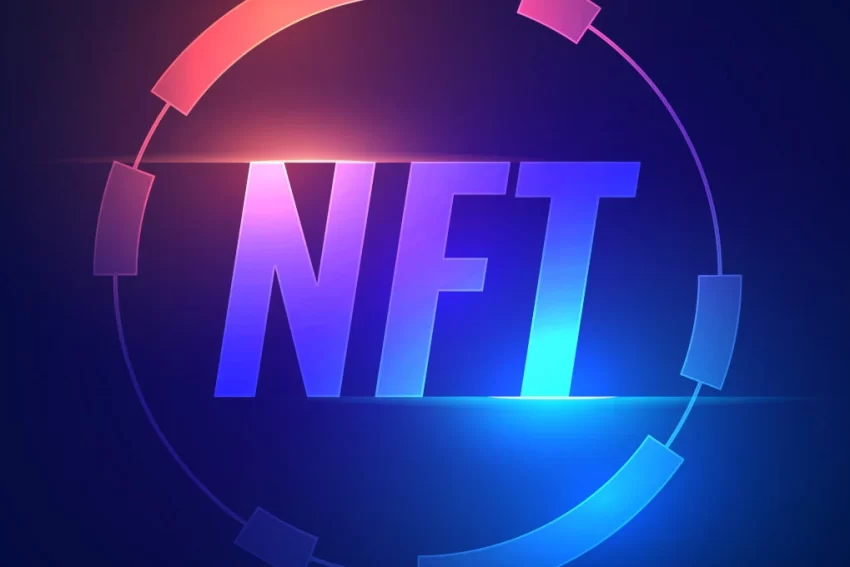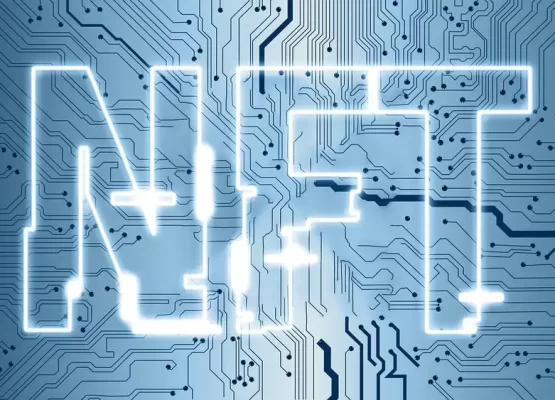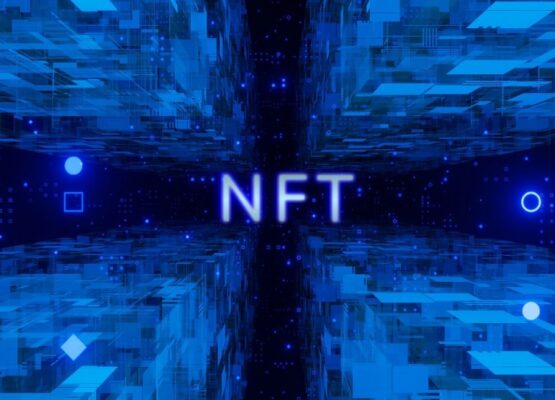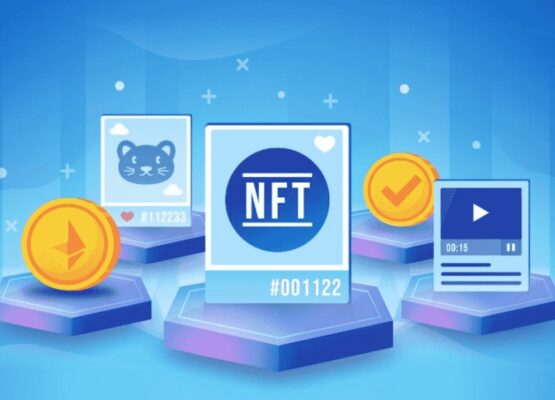Blockchain technology
Blockchain technology is a decentralised and distributed ledger system that allows multiple parties to maintain a shared database in a secure, transparent, and tamper-resistant manner. It gained widespread recognition and popularity with the introduction of the first blockchain implementation, Bitcoin, in 2009. A blockchain technology is fundamentally a chain of blocks, each of which holds a list of transactions. The blocks are linked together using cryptographic techniques, forming a continuous and immutable chain of data.

Why are NFTs so trendy?
Digital culture has opened up other ways of understanding art . Being unique, since each NFT is irreproducible in copy (without a certificate of authenticity), it becomes a work of incalculable value. In this exclusivity and uniqueness lies its value. In fact, its price is what people are willing to pay for it.
Non-Fungible Tokens
NFts ( non-fungible tokens) are digital data assets , be they images, tweets, audiovisual works, digital fashion, or animated GIFs. NFTs have three main characteristics that make them unique.
Exclusivity : No two NFTs are the same. It is impossible to plagiarise this content because it has a certificate of originality and authenticity. Each digital cultural piece is unique and unrepeatable.
Inalterability: Each NFT has true, unmanipulated data that accompanies it and certifies that originality. Part of the blame for this lies with smart contracts (Smart Contract) that do not allow the replication or exchange of information.
Consumption: Unlike cryptocurrencies, NFTs cannot be consumed. That’s where its name comes from (non-expendable).
What are the advantages of NFTs?
Digital music, art, and other digital items may now be collected using NFTs, which provides a special way to generate value in a virtual environment. Online, collectors can purchase one-of-a-kind items that were once worthless. They have the unique ability to validate and register works, offering authors of digital content control over and protection over their intellectual property.
Advantages of Ntfs
Digital art monetization: NFTs allow digital artists to sell their works directly to buyers without intermediaries, making it easier for them to earn more money for their work. When a buyer purchases an NFT, he is buying ownership of the unique and unrepeatable digital work. That is, he is buying the token that represents ownership of the digital artwork.
Secondary Market Sales Royalty: Artists can also include terms in the NFT smart contract that allow them to receive a commission each time the work is sold on the secondary market. They can continue to make money every time the owner of their work changes in this way. These royalty terms can be automatically carried out thanks to blockchain technology’s smart contract. The smart contract automatically determines the fee and pays the artist when the work is sold on the secondary market.
Exclusive Ownership of a Digital Artwork: NFTs ensure that the owner owns the original and authentic artwork, giving it unique and exclusive value. Blockchain technology is what guarantees this, since each NFT is registered in a chain of blocks that contains unique and immutable information about the digital work of art that it represents. By not being easily duplicated by others, its value increases.
Building communities and fostering fan engagement: NFTs allow digital artists to directly interact with their audience and build online communities around their digital artwork, as each token can include interactive features and gamification elements that encourage fan engagement. This makes them more loyal and committed, allowing them to gain exclusive access to special events or content. Gamification elements and direct interaction with audiences can foster audience engagement and create an active and engaged online community around the artist’s digital artwork. NFT owners can share their experience with other fans and promote digital artwork through social media and other online platforms.
Profitable Investment Potential: Due to their rarity and scarcity, they can appreciate greatly over time, allowing buyers to realise a sizable profit if they decide to sell at the proper time.
Copyright protection: Despite the fact that NFTs are recorded in a public registry and are therefore susceptible to copying, the blockchain makes it simple to distinguish between copies. This gives peace of mind to both the artist and the buyers as it reduces the risk of plagiarism.
Accessibility to a Wider Audience: NFTs allow digital artists to reach a global audience through online platforms, reducing geographic barriers and making it easier to distribute their digital artwork. Additionally, they allow digital artists to reach a broader audience by allowing fractional ownership of a digital artwork. This means buyers can purchase a fraction of a digital artwork instead of having to purchase the entire work, lowering the cost of entry and increasing accessibility to a broader audience. Since they provide a sense of security and trust, these tokens can be utilised to reach new audiences that have no prior experience making purchases. This increases their demand and accessibility.
The Synergy Explained
The marriage of blockchain technology and NFTs (Non-Fungible Tokens) is a revolutionary one that has ignited a revolution in the world of digital assets. Let’s examine in greater detail how NFTs and blockchain interact to forge a potent and revolutionary synergy:
Unique Digital Ownership:
NFTs are built on top of blockchain technology, which enables the development of distinctive and verifiable digital assets. Unlike other tokens or cryptocurrencies that are fungible and interchangeable, each NFT is represented by a unique token with a unique identifier. Digital information, including art, music, films, virtual goods, and more, may be tokenized and kept as proven, valued assets on the blockchain thanks to its singularity.
Transparent and Immutable Ledger:
For NFT transactions, the blockchain serves as a decentralised and open ledger. The blockchain contains a record of every NFT-related transaction, including creation, ownership transfers, and sales. The history and origin of each NFT are guaranteed to be publicly accessible and simple to verify thanks to this transparency. The immutability of data on the blockchain, which prevents its alteration or deletion, ensures the veracity and accuracy of NFT ownership records.
Smart Contracts and Automation:
Smart contracts, which are self-executing contracts with established rules and conditions, are frequently used in NFTs. When certain circumstances are met, ownership transfers, royalty payments, and other actions can be carried out automatically thanks to smart contracts in an untrusted and automated manner. This gets rid of the need for middlemen, lowers transaction costs, and makes sure that NFT buyers and sellers go through a smooth and secure process.
Empowering Creators and Artists:
NFTs have given producers and artists unparalleled levels of control. Creators can claim ownership of their digital property and demonstrate provenance for it by tokenizing it. They have the option to offer their NFTs directly to collectors, earn royalties from subsequent sales, and even receive program royalties for each resale after that. This gives creators more authority over their intellectual property and opens up new revenue streams.
Global Accessibility and Inclusivity:
NFTs can be accessed by a global audience thanks to the decentralised nature of blockchain. NFT markets allow participation from collectors and enthusiasts from all over the world, promoting a diverse and inclusive ecology. A wider audience can now be reached by up-and-coming artists and producers without regard to geography because of this universal accessibility.
Disrupting Traditional Industries:
Art, gaming, music, and collectibles are just a few of the traditional industries that have been affected by the convergence of NFTs with blockchain technology. New forms of ownership, trading, and interaction with digital assets have been made possible by NFTs, disrupting established business structures and enabling decentralised markets. Since creators, gamers, musicians, and collectors can interact directly with their consumers, creative economies become more innovative and democratic.
Conclusion:
NFTs and blockchain technology working together have ushered in a new era of digital ownership, authenticity, and innovation. NFTs have transformed several industries, empowered creators, and changed how we view, exchange, and value digital assets by taking advantage of blockchain’s transparency, immutability, and decentralisation. The potential for NFTs are endless as the technology develops, and they are expected to change many industries in the years to come.




